The secret is out: narrative is powerful.
A narrative can entertain, inform, and persuade — but most importantly, it can forge deep, meaningful, and lasting connections.
What is Narrative Writing?
A narrative is a spoken or written account of events. The word narrative is often used interchangeably with story, because a narrative is structured like a story: it has a beginning, a middle, and an end (although it’s not always presented in that order). A narrative can be true or fictional.
Narrative writing is the act of crafting a written narrative (or story), real or imagined. Here are a few different types of written narratives:
- Novels, films, television shows, and plays are narratives.
- A narrative essay is written like a short story, but it’s an account of real events whereas a short story is fictional.
- A short story is also a narrative.
- Narratives also appear in speeches, advertisements, lectures, and even in personal encounters.
- Have you ever shared a personal story about your life with someone? That was your narrative.
- Personal essays, memoirs, and autobiographies are narratives.
We also use the word narrative when discussing how a story is written and structured. We might say that a narrative is messy or tight, that it lacks consistency, or that it’s long and winding.
Narrative writing opportunities abound in industries in which stories are told. Some examples include filmmaking and television, marketing, and politics (speech writing).
But we all use narrative: stories are everywhere.
What is the Power of Narrative?
The word narrative is often thrown around by the media, politicians, and commercial enterprises. They understand the power of narrative, which can be used to spread a message, cultivate emotional connections, and control a story in the cultural landscape; in fact, narratives shape culture. Stories have a profound effect on people, from a single individual to the widespread masses.
Let’s look at some examples of the power of narrative:
Narrative Changes the World: Consider Malala Yousafzai, a young Pakistani girl who was shot in the head at age fifteen because she wanted to go to school. Malala survived and went on to become a world-renowned advocate for education, focusing on regions of the world where girls are deprived of schooling. Malala’s story, or narrative, was instrumental in making the world stage available to her so she could broadcast her message to the masses and affect positive change. In 2014, she won the Nobel Peace Prize.
Narrative Creates Celebrity: Some celebrities excel at using narrative to build their brands and cultivate fans. Watch any music competition show and you’ll see the contestants sharing their life stories, often emphasizing the difficulties or conflicts they’ve experienced. It’s been said before: conflict is story. When audiences see these contestants’ struggles, they want to root for them, and a fandom begins to blossom. Throughout a celebrity’s career, the narrative continues, as we watch their highs and lows. It can be a long, ongoing narrative that keeps the fans tuned in and buying books, movies, music, magazines, tickets, and more.
Narrative Wins Races: Politicians use narrative to build emotional and intellectual connections with the public, and as a tool of persuasion, but they are often more invested in controlling the story than sharing it. As they reveal their life stories to us, politicians pick and choose which bits to include, forging a selective narrative that emphasizes their strengths while downplaying their weaknesses. And the best narrative often wins while an unappealing or disagreeable narrative is a losing proposition.
Narrative Sells: Watch some commercials to see narrative being used to sell products and services. In advertising, stories are often presented as problems, with the product as the solution: After years of itchy razor burn, a young man finally finds a razor that leaves his face clear and smooth. Ads feature narratives that a target demographic can relate to, which is why commercials sell millions of products ranging from food and cleaning supplies to computers and makeup and life-insurance policies.
Narrative Teaches: In high school, I had a history teacher who stood at the front of the class, reading aloud from a dry textbook that was written strictly to impart information — certainly not to engage. A few years later, I took a history class in college with a professor who sat casually on the edge of his desk, relaying the events of history as if we were all sitting rapt around a campfire and he was our master storyteller. Guess which lessons stayed with me?
Narrative Bonds: Narrative is one of the key elements of a relationship. As you get to know someone, you learn about their life and a narrative starts to form. You use that narrative to understand and relate to the other person. We also share in each other’s narratives as we participate in each other’s lives. You are the main character in your life story, but there are many other characters surrounding you, from sidekicks to nemeses. The roles we play in each other’s narratives bind us together. We are all threads in a massive tapestry of a narrative.
Why We Love Narrative
Whether we’re buried in books or ogling at screens, we love to immerse ourselves in narratives. Why is that?
An article on Wired titled “The Art of Immersion: Why Do We Tell Stories?” delves into the science behind why we love stories so much:
Anthropologists tell us that storytelling is central to human existence. That it’s common to every known culture. That it involves a symbiotic exchange between teller and listener — an exchange we learn to negotiate in infancy.
Just as the brain detects patterns in the visual forms of nature — a face, a figure, a flower — and in sound, so too it detects patterns in information. Stories are recognizable patterns, and in those patterns we find meaning. We use stories to make sense of our world and to share that understanding with others. They are the signal within the noise.
So how do we find meaning in stories? How do we use stories to make sense of our world? Let’s look to fictional and personal narratives for the answers:
Personal (Nonfiction) Narratives: Storytelling is used in memoirs and documentaries to convey true stories. When we hear about a devastating natural disaster on the other side of the world that affected thousands of people, it’s difficult to put it into context. But when we hear firsthand accounts from survivors who describe what it was like to witness and experience the disaster — when we hear their narratives — we can better relate to the events that transpired. We begin to understand what it was like to be there, and our empathy gets engaged.
Fictional Narratives: Fiction is probably the most beloved form of narrative writing and story consumption. Books, movies, television shows, and video games give us made-up stories. Whether a historical novel that carries us into the past so we can gain insight on what it might have been like to live in a world without technology or a science-fiction film that takes us far into the future where technology has surpassed our wildest imaginations, fictional narratives, like true narratives, give us access to experiences that we’ll never have and allow us to gain better understanding of the world we live in, and in some cases, the world we might someday live in.
The most successful narratives make the audience feel something. Let me say that again: the most successful narratives make the audience feel something. It is a narrative’s ability to evoke emotion (and it can be any emotion) that determines its impact on individuals and groups. Narrative can make us laugh or cry, terrify or mystify us. They can fill us with awe and wonder and glory. Perhaps you’ve heard the old adage: “People will forget what you said and what you did, but they’ll never forget how you made them feel.”
Therein lies the greatest power of narrative: its impact on our emotions.
The Science of Narrative
Scientists have examined the power of narrative and made some fascinating discoveries, most of which confirm the experiences that we’ve all had with books, movies, and other forms of storytelling. It turns out that narrative directly affects the human brain, and its effects can be measured:
- Narrative changes our brain activity.
- It increases oxytocin synthesis, which increases empathy, trust, kindness, and cooperation.
- It alters our emotional state, aligning it with the narrative we’re experiencing.
- It improves recall and increases attention.
That is real, proven power.
But let’s get back to our business — the business of writing.
A Guide to Narrative Writing
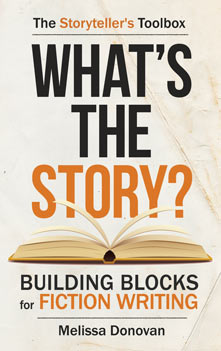 Whether we write prose or scripts, narrative writing is a useful tool for sharing our thoughts, experiences, and ideas with others. We can use narrative to pose questions: What will happen when artificial intelligence becomes smarter than humans? What was it like to be aboard the Titanic? What is it like to climb Mount Everest? Or we can use narrative to share real events and experiences with the masses.
Whether we write prose or scripts, narrative writing is a useful tool for sharing our thoughts, experiences, and ideas with others. We can use narrative to pose questions: What will happen when artificial intelligence becomes smarter than humans? What was it like to be aboard the Titanic? What is it like to climb Mount Everest? Or we can use narrative to share real events and experiences with the masses.
But how do we go about writing a good narrative?
There are several key elements that we find in successful narrative writing, which you can use as a guide while crafting a narrative of your own:
- Setting: The backdrop of a narrative sets the stage and helps the audience enter a story world. Setting is crucial, even if it only takes a few words to establish.
- Characters: They can be made-up characters or real people. Audiences develop relationships with characters; it is through this bond that we connect with stories on an emotional level.
- Conflict: All the best narratives are built around a core conflict or story question. We stay tuned in because we want see how the conflict gets resolved. We want to find out the answers to questions that the story poses and see how the characters solve the problems they’ve encountered.
- Rising tension: As a narrative progresses, the tension increases. There are peaks and valleys, but the tension ultimately rises until the narrative reaches its climax.
- Plot: Plot is what happens (the beats of a story) as the narrative follows an arc that has a beginning, a middle, and an end. Arcs almost always result in meaningful transformation, which is one of the most appealing elements of narrative.
- Action and dialogue: Action and dialogue are how we experience a narrative. The characters say and do things that move the plot forward.
- Point of view: Who’s telling the story? The voice of the narrative sets the tone for the tale. The narrative point of view gives us a particular perspective on the events taking place.
As you pursue narrative writing, ask whether you’re including these essential elements and whether they’re woven together seamlessly.
Have you tried your hand at narrative writing? What kind of narrative did you write? Did you aim to educate and inform, share your thoughts and ideas, or entertain audiences? Share your experiences with narrative writing by leaving a comment, and keep writing!


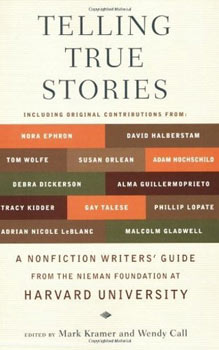
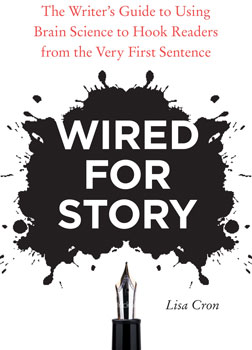
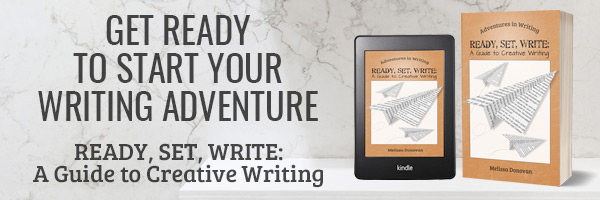

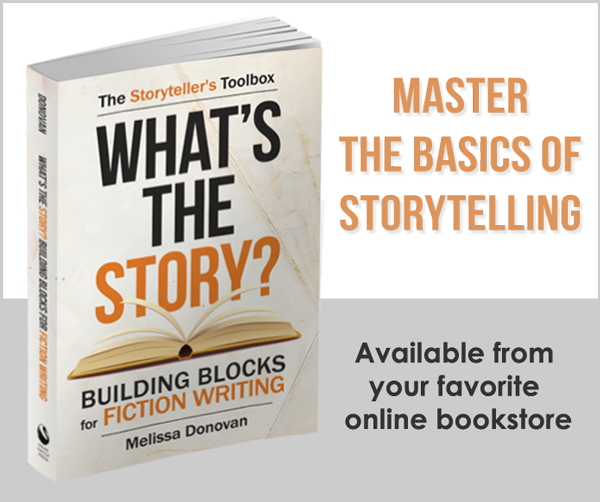

Ideal way to kick off a dull damp Thursday morning.
Thank You.
Thank you!
Thank you for this article, am a reaseacher and using narrative ✍️ 🔡 📝 ✍️
You’re welcome!
Excellent. Clear, to the point and easy to understand. I loved it. Thank you for writing it.
Thanks!